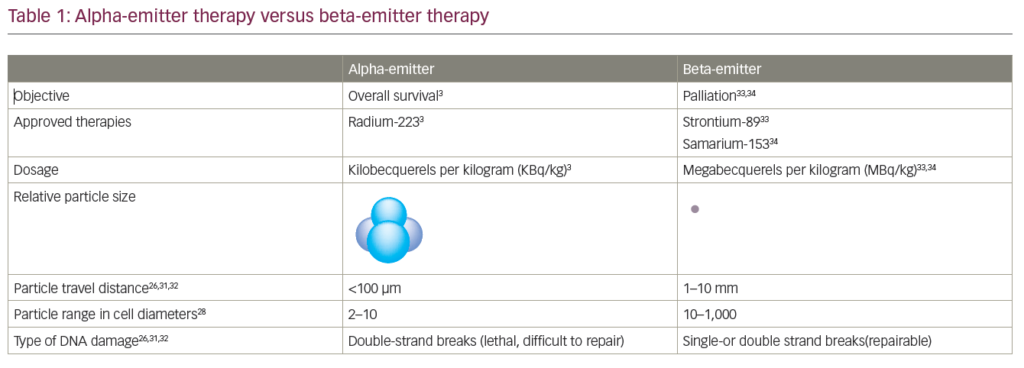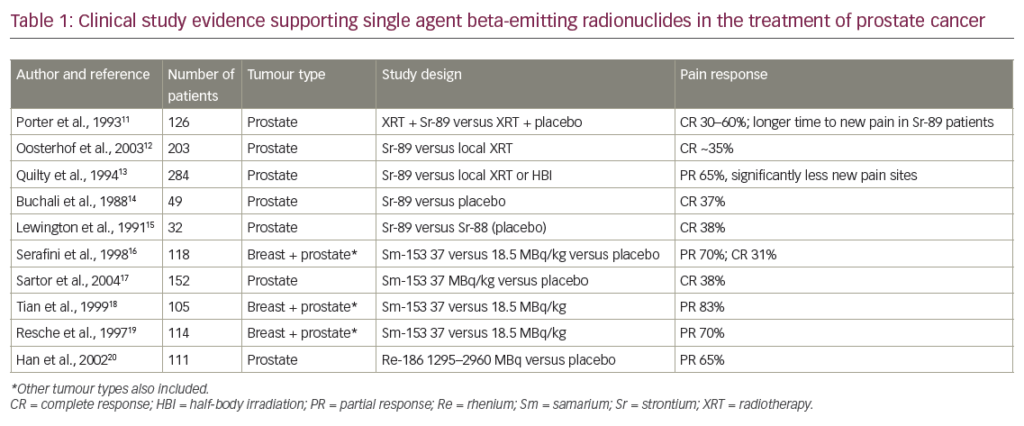Second-line Therapy
Development of resistance to one kind of hormonal therapy does not preclude a second or even third line of hormonal manipulation. The androgen receptor often remains active despite low serum testosterone levels.3 Several classes of therapeutic options are available, including: adrenal androgen inhibitors;4 antiandrogens, e.g. flutamide, nilutamide and bicalutamide;5 oestrogens and progestins;6 and glucocorticoids, e.g. dexamethasone.7 Although these agents often lead to an improvement in a patient’s quality of life (QoL) andmay temporarily lower PSA levels, as yet there has been no survival benefit shown in a randomised phase III trial. Two new oral agents are currently in development, with recent phase II clinical results presented at the American Society for Clinical Oncology (ASCO) meeting in 2008. The first is abiraterone acetate, part of the class of drugs that target steroidogenesis in the adrenal glands in a similar way to the existing agent ketoconazole,4 but using a different pathway to inhibit lyase enzyme CYP17.8 Early proof-of-concept results for abiraterone acetate show some marked reductions in PSA levels and improved radiographic scans in patients who have already failed hormonal therapy, including with ketoconazole, but with considerably lower rates of toxicity. In 36 men with castration-resistant, docetaxelnaïve disease, 70% exhibited a >50% decline in PSA levels.9 Abiraterone acetate is also being tested in post-docetaxel patients, with positive initial results.10 The second agent is novel antiandrogen MDV3100. Unlike existing antiandrogens, which are typically given together with a gonadotropin-releasing hormone (GnRH), MDV3100 has a much higher binding affinity to the androgen receptor. Preliminary data show that in chemotherapy-naïve patients, 55% had >50% declines in PSA levels compared with 42% of the post-chemotherapy patients. This includes patients who have already failed antiandrogen treatment with a GnRH analogue plus bicalutamide or nilutamide. There were only minimal toxicities.11 It is hoped that both of these agents will fulfil their potential as they move into phase III testing.
Chemotherapy
In 1996, chemotherapy (mitoxantrone plus prednisone) demonstrated significant palliative benefits in CRPC, significantly reducing pain (p<0.0001) and improving QoL compared with prednisone alone.12 However, overall survival was not improved. This treatment regimen was subsequently approved for CRPC based on palliative benefit. In 2004, docetaxel plus estramustine was compared with mitoxantrone plus prednisone every three weeks, and this trial demonstrated the first survival benefit in this patient population.13 Median survival was increased by two months (p=0.01) in patients treated with docetaxel plus estramustine. A significant increase in PSA response (p<0.0001) was also observed in the docetaxel plus estramustine group. However, there was significant added toxicity due to estramustine. A similar international trial comparing two different schedules of docetaxel (either every three weeks or weekly) plus prednisone versus mitoxantrone plus prednisone for 30 weeks demonstrated a significant 2.5-month survival advantage (p=0.009) in patients treated with docetaxel (every three weeks) compared with the mitoxantrone plus prednisone group.14 In contrast, docetaxel plus prednisone administered weekly did not demonstrate a significant improvement in terms of survival. Docetaxel plus prednisone also significantly improved pain response and PSA response rates compared with mitoxantrone plus prednisone (p=0.01 and p=0.0005, respectively). In general, docetaxel was well tolerated. Grade 3/4 toxicities included neutropenia, with 3% of the patients in the docetaxel (every three weeks) group being hospitalised with febrile neutropenia compared with 2% of the patients in the mitoxantrone plus prednisone group. Common nonhaematological adverse events included alopecia, fatigue and nausea. By significantly improving survival and reducing both PSA and pain levels, docetaxel has now become the first-choice chemotherapy in CRPC.
Recent evidence suggests that docetaxel plus prednisone not only is safe but also promotes a good response even in patients with previous chemotherapy experience, albeit at a lower rate than for chemotherapynaïve patients.15 Patients with metastatic CRPC have also been shown to respond to re-treatment with docetaxel therapy, despite progressing after an initial biochemical remission.16 However, this treatment does cause side effects, and CRPC patients without symptoms may choose not to undergo such aggressive treatment without a better chance of improving their survival odds. Typically, a PSA reduction of >50% from baseline 90 days post-treatment is the most common surrogate marker used, but an earlier marker would be preferable: candidates include PSA doubling time and PSA half-life. A retrospective review presented at ASCO 2008 concluded that a PSA half-life >70 days was associated with a significant advantage in overall survival of 10 months in CRPC patients receiving docetaxel. There was no predictive value for either PSA response or half-life at 42 days post-chemotherapy initiation.17 ASCO also saw an evaluation of another potential biomarker: high levels of circulating tumour cells (CTCs) have previously been linked with poor overall survival, and in this small study the investigators found that patients with higher CTC counts (>5 CTCs/7.5ml blood) at any point from baseline through therapy had shorter overall survival. However, the researchers did not disclose the type of therapy patients received and whether that was a variable in survival. However, those patients with a CTC count >50 at baseline had a median overall survival of only 6.3 months.18 These results need to be validated in larger, independent cohorts.
Bone-targeted Therapy
Bone loss in patients with prostate cancer may be attributed to the disease itself, which is a risk factor for osteoporosis, and to ADT. Bone loss associated with ADT has been shown to increase the risk of fracture.19,20 Moreover, approximately 70% of patients with advanced prostate cancer will develop bone metastases, which cause local decreases in bone integrity. All of these disease-associated factors lead to a fragile bone state and a significant risk of skeletal complications, including pathological fractures, debilitating bone pain and spinal cord compression. The patient’s QoL is affected by these complications. Therefore, symptom control and maintaining QOL are priorities for patients with CRPC.21,22
Radiation/radioisotope therapy and bisphosphonates are palliative treatments for patients with bone metastases. Bisphosphonates are inhibitors of osteoclast-mediated bone resorption. They can prevent bone loss in patients with prostate cancer receiving ADT, and zoledronic acid can increase bone mineral density in this setting.23,24 Zoledronic acid has demonstrated significant clinical benefits, including the delay and prevention of skeletal complications and durable pain palliation in patients with bone metastases from CRPC.25 Moreover, bisphosphonates can be combined with chemotherapy. Indeed, zoledronic acid has been used safely with a variety of cytotoxic chemotherapies in clinical trials. Adverse events reported during bisphosphonate treatment did not appear to increase with concomitant chemotherapy. Based on the available evidence, several guidelines, including those of the National Comprehensive Cancer Network (NCCN), the European Association of Urology and the International Consultation on Urological Diseases, recommend that bisphosphonates be used to preserve bone health and to prevent skeletal complications in patients with bone metastases from CRPC, whether asymptomatic or symptomatic.26,27 Currently, zoledronic acid is the only bisphosphonate that has shown efficacy in prostate cancer. The combination of docetaxel and zoledronic acid has demonstrated additive antitumor activity in a human prostate cancer cell line, PC-3.28 The antitumor activity of docetaxel was increased with the addition of zoledronic acid in a dose-dependent manner. These results suggest that combination therapy with docetaxel and zoledronic acid could be especially active in patients with CRPC.29
Other bone-targeted agents include the RANK ligand inhibitor denosumab, which has been shown to be effective in preventing bone loss due to ADT. The same agent is currently being studied in the setting of prevention of bone metastases in high-risk patients, as well as in the prevention of skeletal-related events in patients with bone metastases. The endothelin receptor inhibitor ZD4054 is also being studied in placebo-controlled trials to determine whether this agent can delay or prevent the appearance of bone metastases in nonmetastatic CRPC. It is also being studied in metastatic CRPC with survival as a primary end-point.30 Algorithms and Patient Selection
The latest practice guidelines from the NCCN offer advice on factors to take into account when determining the best course of therapy. A patient’s chances of achieving a cure are largely based on Gleason score, PSA level and clinical stage. These factors must be levelled against the patient’s life expectancy, co-morbidities, potential therapeutic side effects and personal choice. Systemic salvage therapy for patients with metastatic CRPC includes bisphosphonates plus one of chemotherapy (docetaxel is preferred), radiotherapy or simply supportive care. In particular, docetaxel is recommended for those patients with recurrent metastatic CRPC, where the two phase III studies mentioned earlier have proved the benefit of this regimen. For those who have bone metastases, zoledronic acid should be added; as the life expectancy of patients increases, so too does the importance of maintaining skeletal health (see Figure 1).
Conclusion
Advanced CRPC is a multifaceted problem and needs a multidisciplinary approach. Urologists should remain involved from the time of diagnosis throughout the continuum of care and should be familiar with the new challenges that this disease presents. Medical oncologists will have to take up the challenge of being actively involved in decision-making earlier than they have been used to in the past.
There are many aspects – biological, chronological, physical and psychological – that need to be taken into account when deciding on treatment. For patients with CRPC who have relapsed after treatment, systemic chemotherapy – preferably with docetaxel – is currently recommended. There are other treatments coming through to enhance this regimen, but none as yet has proved successful in phase III trials. Therefore, in the meantime, all specialities involved with treating the patient and maintaining his QOL need to be aware that hormone therapy diminishes bone health, chemotherapy with docetaxel can provide a survival benefit in CRPC and zoledronic acid reduces and delays skeletal complications. Building on these positive results is necessary to further improve survival, symptom management and QOL in these poor-prognosis patients.















